Not everyone thinks that from completely inconspicuous materials that are rarely used, a beautiful product can be made. For example, from ordinary sequins that decorate dresses and blouses, you can make chic voluminous bouquets, and not just embroider them. And even a child can master this activity.
What can be made from sequins
Sequins are flat shiny plastic disks of different colors that are used to decorate clothes and interior items. In addition, this is a wonderful material for handicrafts: even novice craftswomen can easily cope with this material and make a product of amazing beauty.
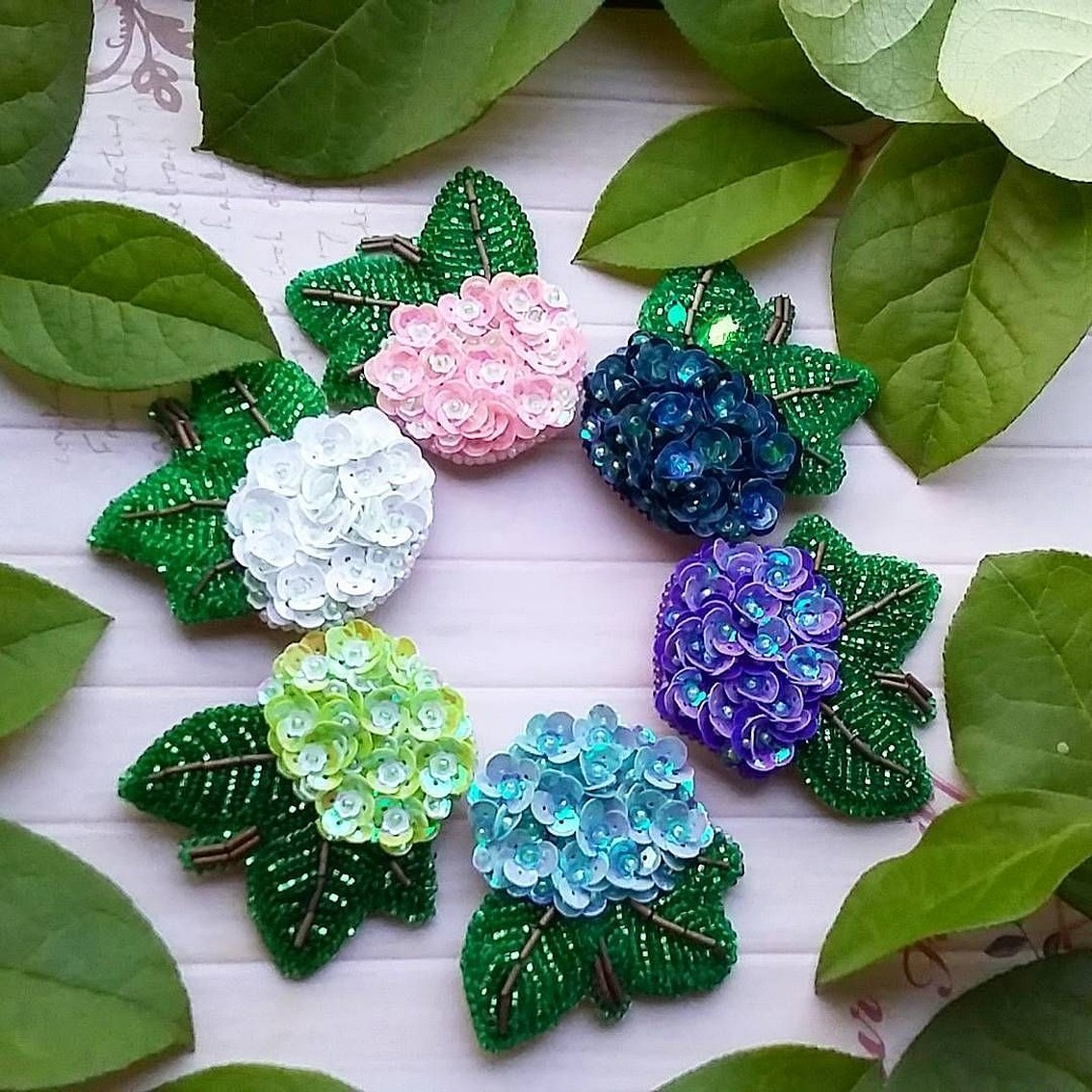
Due to their ease of use, many crafts are made from these elements:
- embroidery on fabric;
- brooches;
- hairpins and hair ornaments;
- amazing pictures;
- voluminous toys;
- Christmas tree decorations;
- bouquets of flowers.
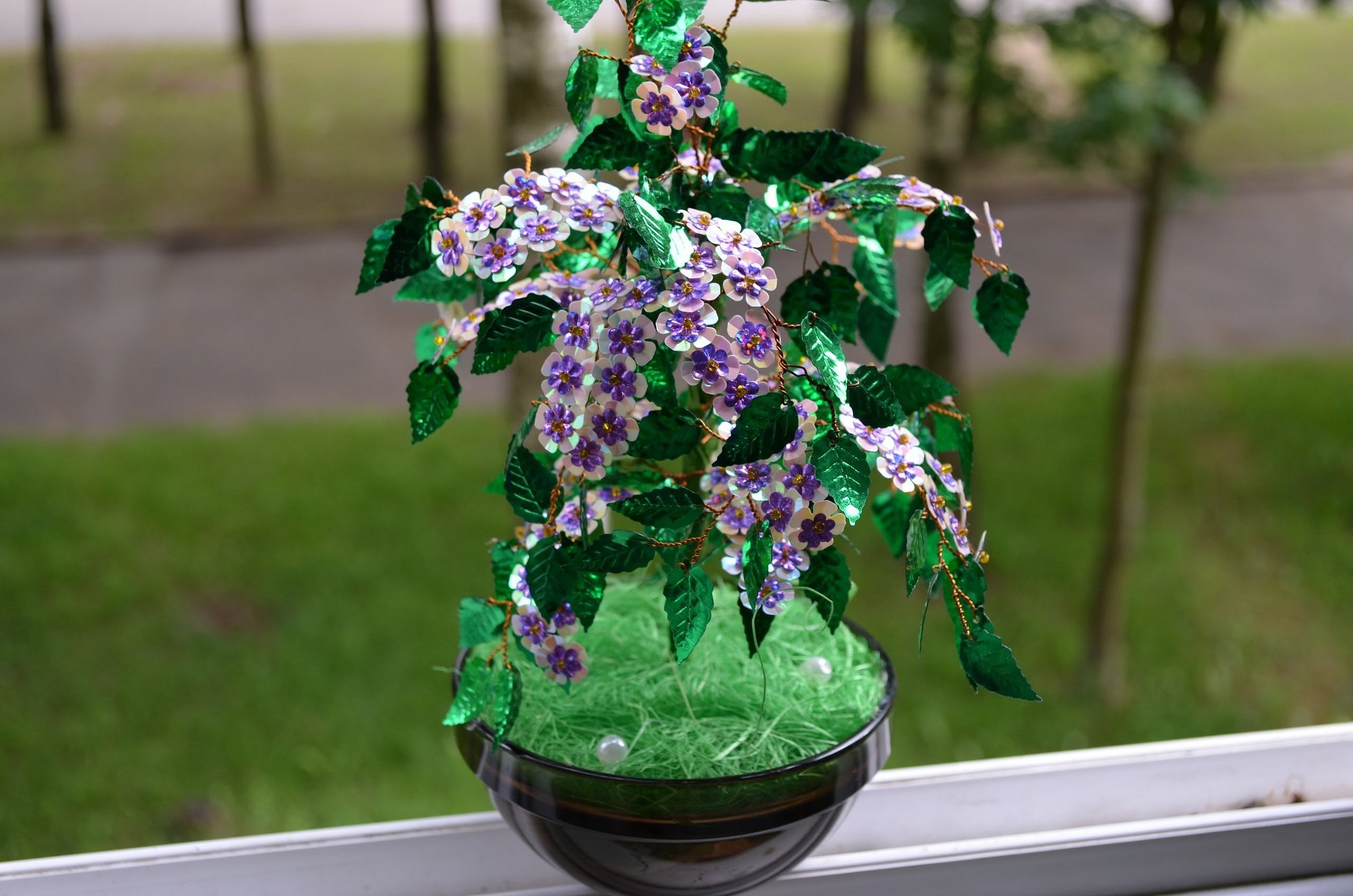
Types and methods of weaving used in making flowers
Volumetric bouquets made of this material look especially good, especially roses made of sequins, sometimes you can't even believe that they are made only of wire and sequins. In order to make such volumetric flowers, you should know some weaving techniques. Let's consider the main ones.
Volumetric weaving (column)
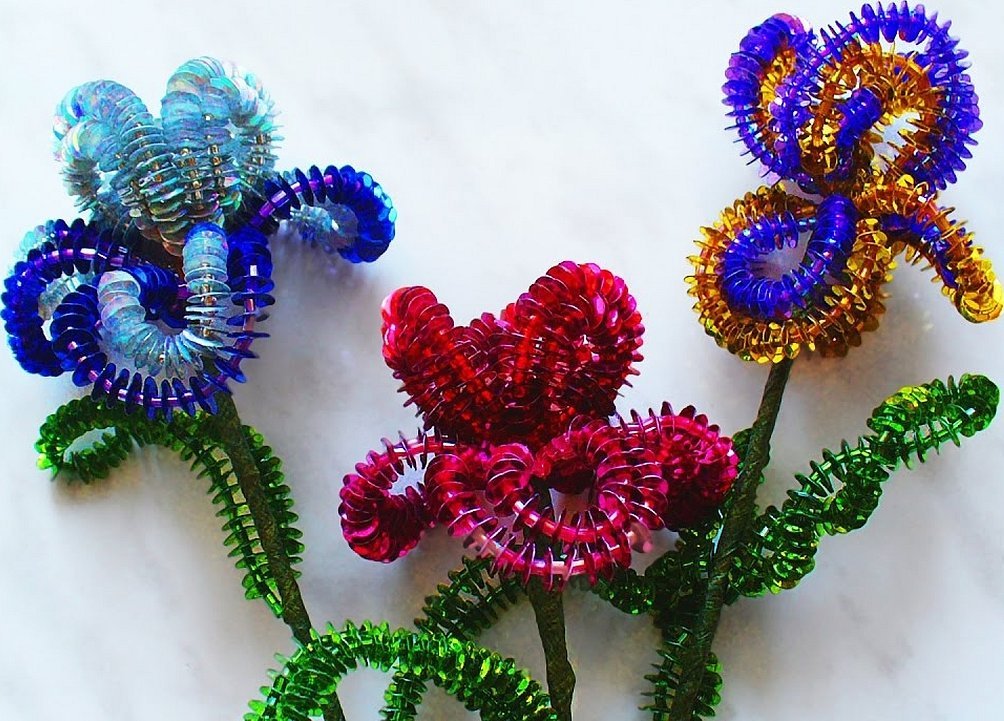
This type of weaving is the simplest, it is perfect for beginners who are just learning to work with a new material. To do this, take a wire, string two beads on it, then a sequin, then two more beads, etc. The chain continues to the required size. At the end, the wire is twisted with pliers several times so that the parts hold firmly.
Important! If you give the column an unusual shape, the product will become more elegant.
How to make a corner, center and duplicate strip
From ready-made simple columns, the remaining, more complex elements for making a flower are made.

For example, to make a petal, the "corner" technique is used. The required number of elements are collected on the wire, both ends of the wire are connected and twisted, a closed circle is obtained. For reliability, the end of the wire is passed through the beginning of the weaving and the sides are fastened end to end. From this figure, any shape of flower petal can be formed.
If the petal is large (like peonies or roses), then the "central stripe" technique is used: an additional stripe is drawn inside the "corner" to avoid gaps. It is done simply: after completing the petal, the parts are strung as for a simple column. When its length becomes equal to the height of the petal, the wire is threaded through the first sequin and secured.
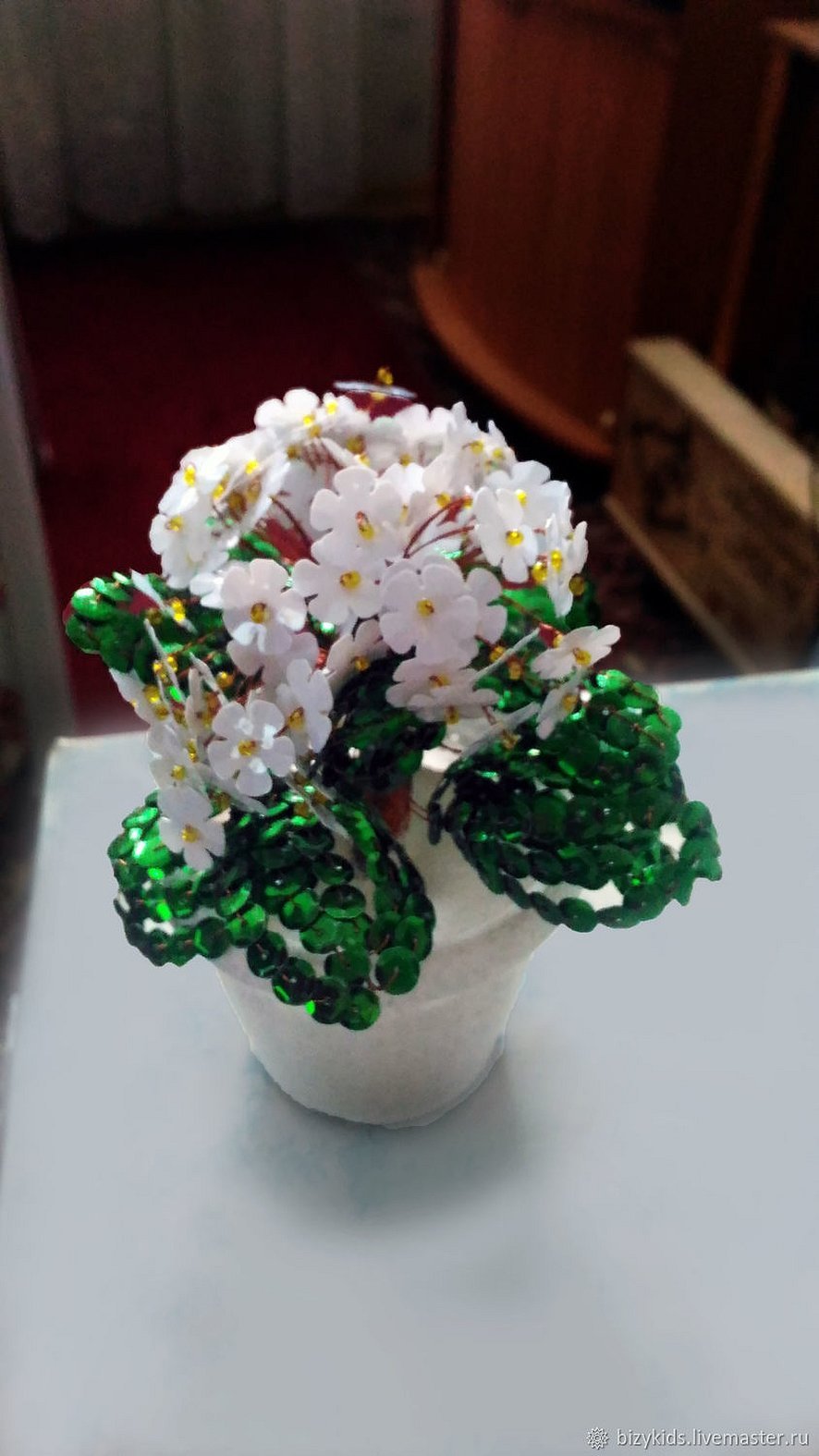
Important! The wire should not be twisted too tightly, otherwise it may simply break.
Sometimes even the "central strip" is not enough. In this case, the "duplicate strip" technique saves. Its difference is that it is two sequins shorter than the main strip and starts not from the first, but from the second part of the "corner". At the end, it is also attached to the adjacent part from the "central strip".
Flowers from sequins and beads: master class
Craftswomen often ask themselves: what can be made from sequins with their own hands? Here are some step-by-step instructions for products that are completely different from each other, do not require much effort and at the same time look beautiful.
Important! When stringing the pieces, make sure that they are all facing the same direction (convex or concave).
Willow branches
Willow branches will be a great decoration for your apartment in spring, and will also be suitable as a souvenir. To make them, you will need sequins and beads in green and white (yellow or beige):
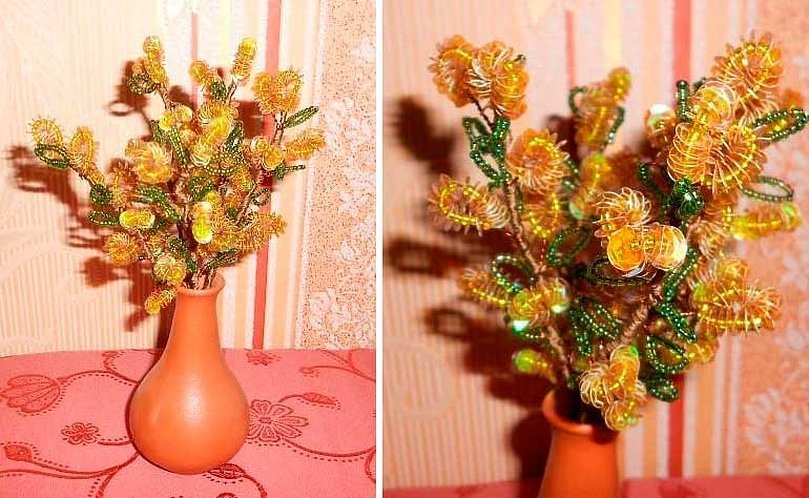
- Take 15 cm of wire and thread 2 white beads through it.
- Then repeat the sequential chain 16 times.
- At the end add 2 more bead beads.
- Twist the ends of the wire to make a willow flower.
- For the petal, take 10 cm of wire and thread 1 green piece onto it.
- Twist the wire underneath it.
- Repeat this 3 more times. The sheet should consist of 4 parts.
- Prepare a lot of such parts (depending on how many branches you need to get).
- Alternate the flower and leaf, twisting the wire into one branch. Place them alternately on both sides.

Wildflower
Perhaps the most common option for products in this technique, suitable for classes with children. To make it, you will need green and multi-colored parts, depending on your imagination. You will also need yellow beads for stamens. This is the only difference between the pattern and making a willow.
- Just like the willow flower, prepare 5 pieces of the same color. These will be the petals of one flower.
- Collect all the elements into one and secure by twisting.
- Bring one wire into the middle of the flower, twist it slightly and thread 1 yellow bead through it, twist it again and add another bead.
- Repeat the action several times and give a free form to the stamens in the middle of the flower.
- Similar to the willow, prepare several green leaves.
- Collect everything into one bouquet by twisting.
- Flowers may look similar to willow, or they may be different (for example, the leaves will be located at the base of the stem).
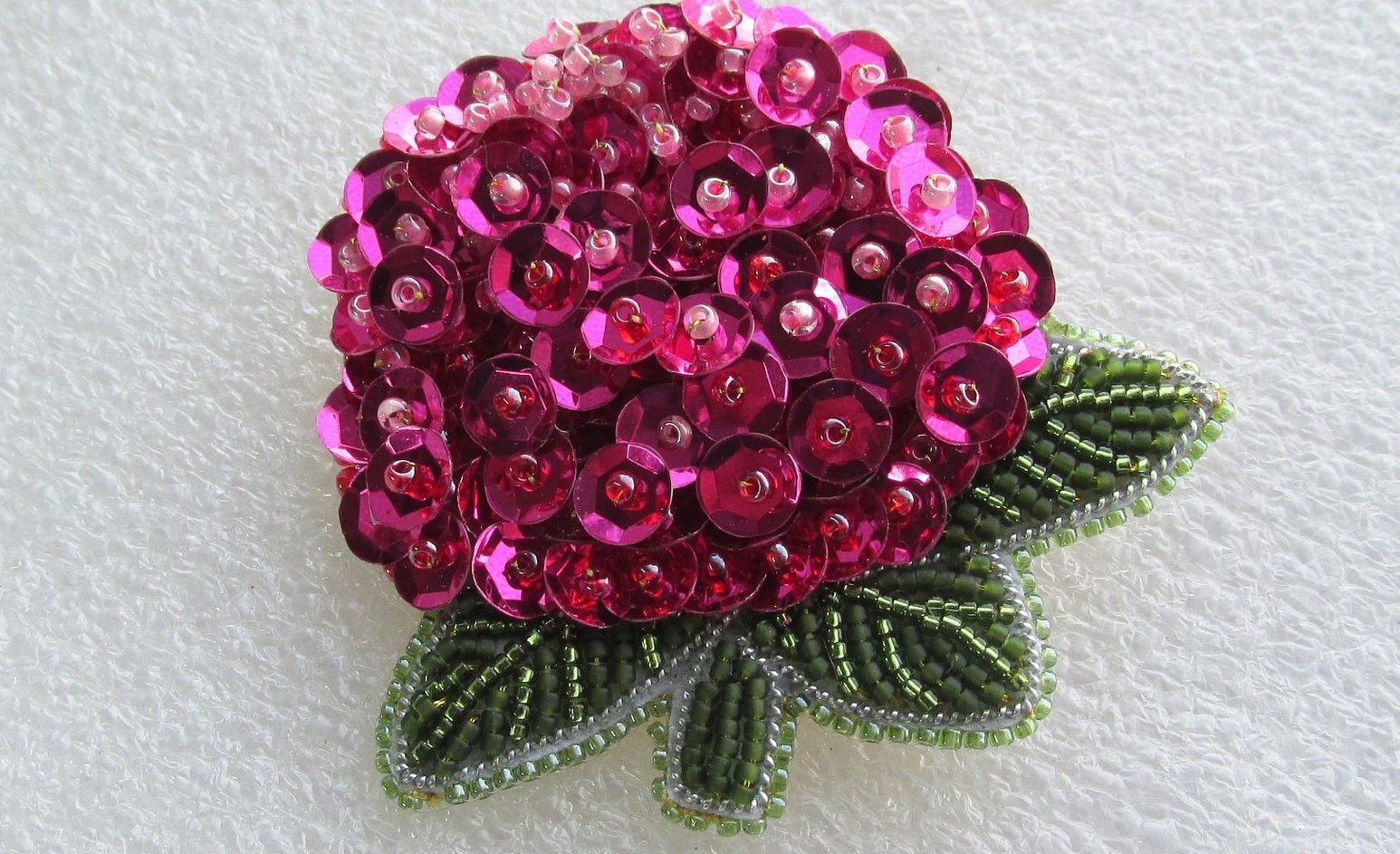
Mouse hyacinth
You will need green and purple parts and wire.
- Just like for the willow, make 20 purple petals.
- Connect them together by twisting the wire. Make sure that the petals fit tightly to each other and are evenly distributed on all sides.
- Next, make the leaves using the “leaf” technique: place 11 pieces on one side of a 25 cm wire and 10 on the other.
- Connect them together and add a "center" line of 10 sequins.
- Attach the leaves to the flower at the very base.
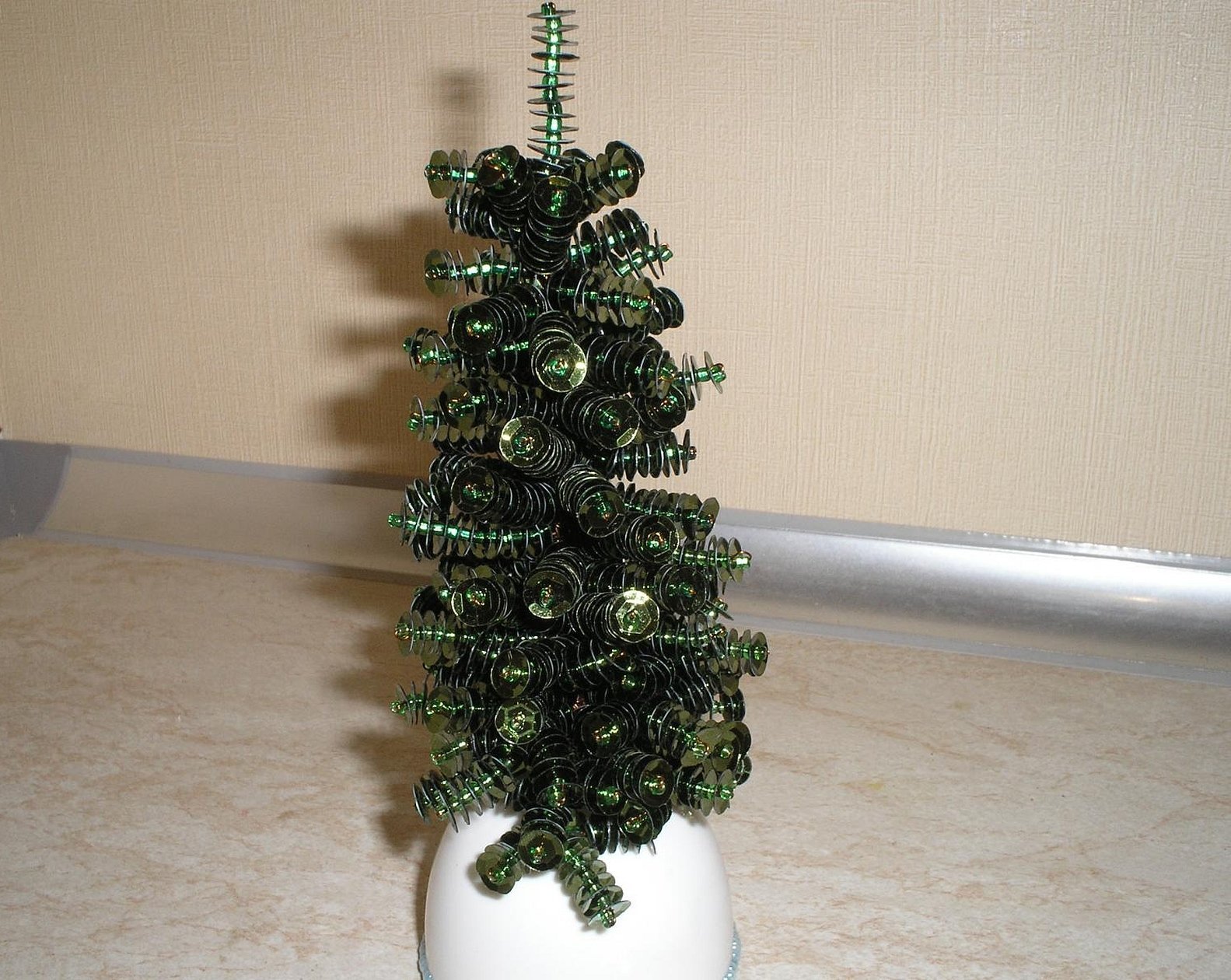
Christmas tree
It will look good as a New Year's souvenir or decorative element.
- Place 13 sequins, alternating with beads, on 50 cm of wire.
- Without touching the last element, return the wire back, threading it through all the parts.
- After this, make three columns of 6 elements, three more of 7, four of 8, four of 9 sequins, and then groups of five columns, increasing the length of each by one piece.
- Repeat 3 more of these elements.
- Twist the parts one by one clockwise, placing the branches as close to each other as possible.
- Distribute the base of the trunk in three directions so that the product is stable.

Tulip
A more complex and therefore more spectacular product is a tulip. Prepare sequins of black, yellow and red colors. Matching beads and wire.
- For the petal, put 2 black elements and 1 yellow one (as the base of the flower) on a 30 cm wire.
- Add 23 red. Combine.
- Place 1 yellow and 8 red pieces on the duplicate strip.
- Repeat the previous step, there should be 2 duplicate stripes.
- Connect and secure the wire.
- Prepare 5 petals and connect them by twisting.
- Bring one wire to the center of the bud to make stamens (see above).
- Wrap the finished tulip stem tightly with green thread or fabric.
Features of the combination of sequins and beads
Without using beads, sequin products are unlikely to turn out well. It performs several functions in the craft at once:
- adds volume to the product;
- helps to arrange sequins vertically, and not just horizontally to each other;
- used as a thinner material for some elements (stamens, specks, pattern outlines).
Flowers made of sequins are not only a wonderful decoration for your home, a memorable souvenir for family and friends, but also an exciting and creative hobby.




